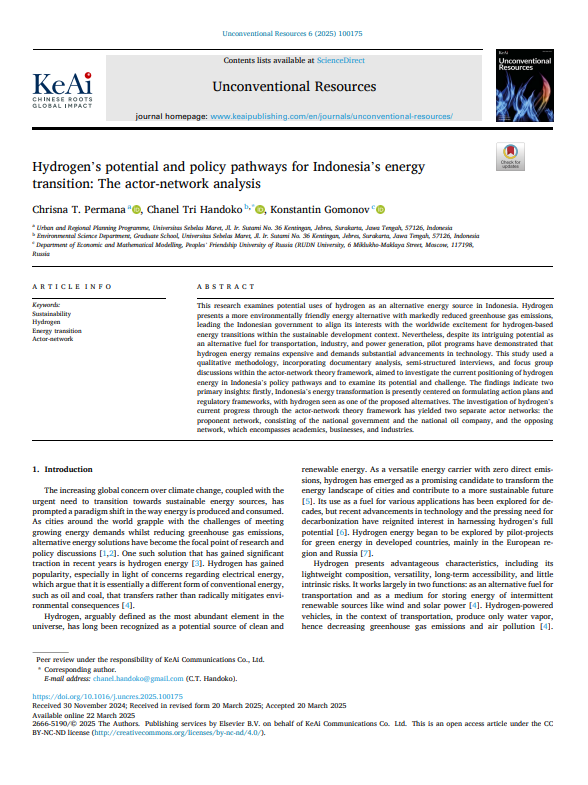
Keyword(s)
Author(s)
Chrisna T. Permana, Chanel Tri Handoko, Konstantin Gomonov
Country(ies)
Publisher
Published Date
Access
DOI
This research examines potential uses of hydrogen as an alternative energy source in Indonesia. Hydrogen presents a more environmentally friendly energy alternative with markedly reduced greenhouse gas emissions, leading the Indonesian government to align its interests with the worldwide excitement for hydrogen-based energy transitions within the sustainable development context. Nevertheless, despite its intriguing potential as an alternative fuel for transportation, industry, and power generation, pilot programs have demonstrated that hydrogen energy remains expensive and demands substantial advancements in technology. This study used a qualitative methodology, incorporating documentary analysis, semi-structured interviews, and focus group discussions within the actor-network theory framework, aimed to investigate the current positioning of hydrogen energy in Indonesia’s policy pathways and to examine its potential and challenge. The findings indicate two primary insights: firstly, Indonesia’s energy transformation is presently centered on formulating action plans and regulatory frameworks, with hydrogen seen as one of the proposed alternatives. The investigation of hydrogen’s current progress through the actor-network theory framework has yielded two separate actor networks: the proponent network, consisting of the national government and the national oil company, and the opposing network, which encompasses academics, businesses, and industries.